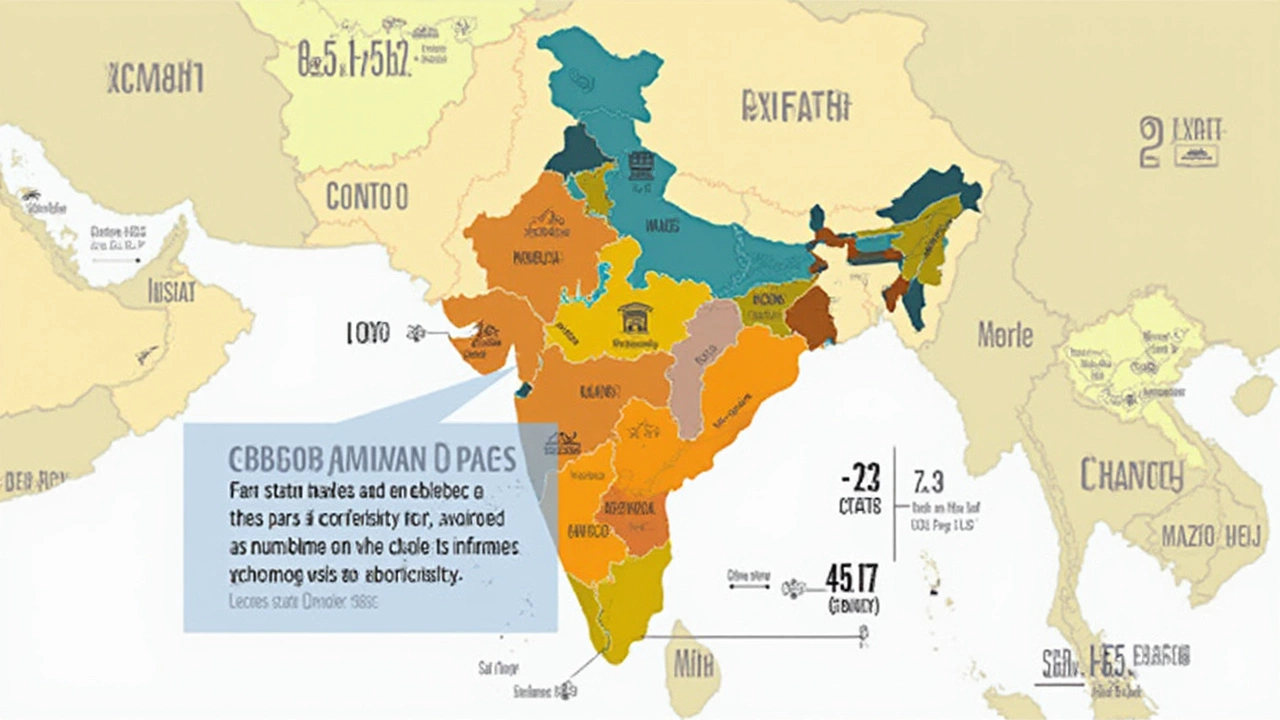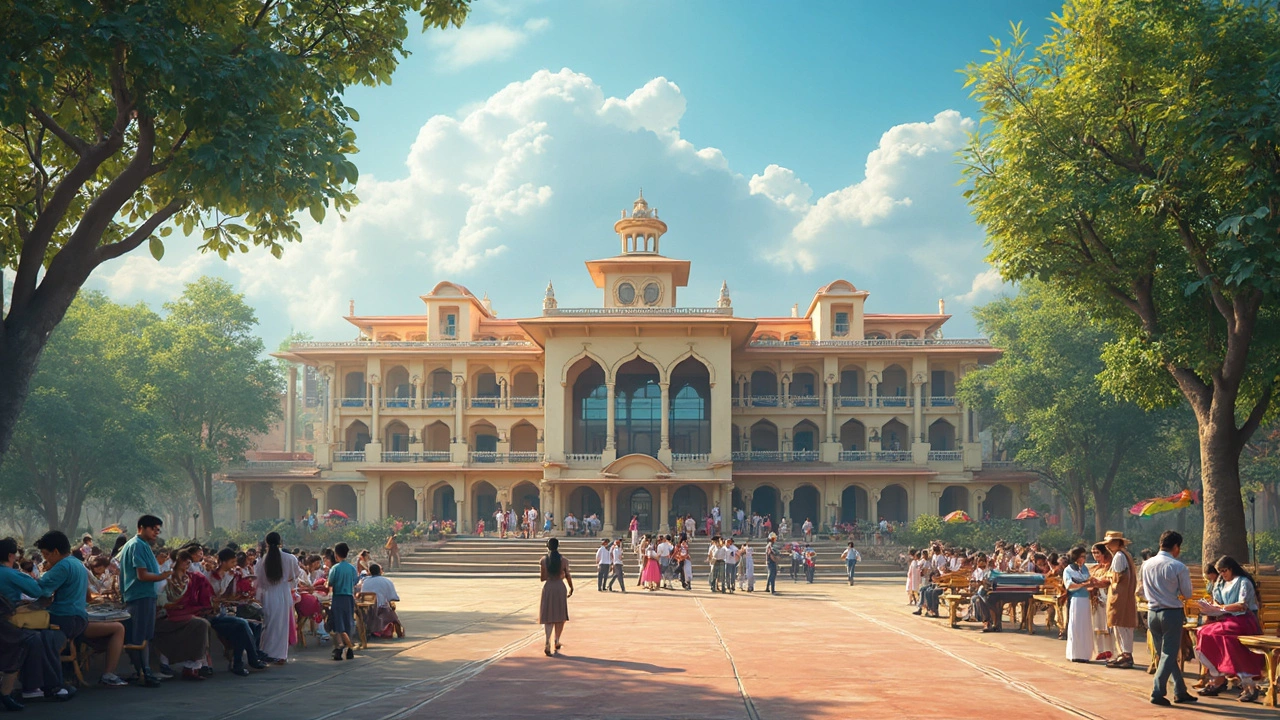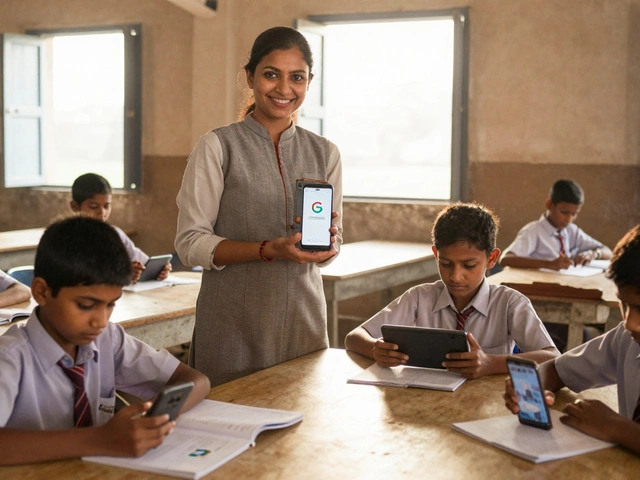Ever wondered which state in India houses the most CBSE schools? If you're curious, you're not alone. With so many students and parents scouting for the best educational institutions, knowing where the concentration of CBSE schools lies can be pretty handy.
The Central Board of Secondary Education, or CBSE, is like the golden standard for schools in India, offering consistency in quality and curriculum across the country. But when it comes to sheer numbers, Uttar Pradesh leads the pack. Yep, it boasts the most CBSE schools compared to any other state. Pretty surprising, right?
Many families lean towards CBSE for its structured syllabus and solid prep for competitive exams. Also, with so many job transfers and relocations within India, having the CBSE curriculum means kids can easily transition between schools in different states without much hassle. It's all about keeping life a bit simpler for everyone involved.
- Understanding the CBSE Syllabus
- The State with the Most CBSE Schools
- Interesting Facts About CBSE Schools in India
- Reasons for CBSE's Popularity
- Tips for Choosing the Right CBSE School
Understanding the CBSE Syllabus
So, you're curious about the CBSE syllabus? Well, it's designed by the Central Board of Secondary Education in India, and it's like a blueprint for countless kids across the country. This curriculum aims to balance knowledge and skill development, which is why it's a favorite among many parents and students.
The core subjects like Maths, Science, English, and Social Science are staple parts of the CBSE syllabus. But it doesn't stop there. Students get to pick from a variety of electives, like computers or economics, depending on their interests. It’s pretty flexible and allows kids to explore what they really enjoy—how cool is that, right?
One of the standout features of the CBSE syllabus is its focus on preparing students for competitive exams, like the JEE and NEET. These are some tough nut tests for engineering and medical aspirants. The CBSE's structure digs into these areas, giving students a solid foundation and a bit of a head start.
The emphasis on practical and application-based learning is huge too. Gone are the days when just cramming would get you through. In today's CBSE world, students need to apply what they learn in real-world scenarios, making the education much more effective. Schools often have labs and projects that encourage this hands-on approach.
For parents, knowing how the CBSE syllabus unfolds can be a lifesaver. When kids switch schools or move between states, the consistency of the syllabus helps them stay on track. Plus, CBSE provides a progress-friendly plan for students starting from the fundamental classes till they tackle those board exams in grades 10 and 12.
CBSE schools all follow this same outline, ensuring that education remains uniform across the board—even if schools might vary in methodologies or extracurricular offerings. So whether you're in big city schools or a quiet rural area, you're learning pretty much the same stuff.
The State with the Most CBSE Schools
Alright, so let’s dive straight into it. When talking about the CBSE schools in India, Uttar Pradesh stands out with the highest number of these schools. It’s quite the hub, really. With its vast geography and bustling population, the state has naturally leaned into the CBSE framework, offering thousands of students access to this popular education system.
To give you a clearer picture, here's a look at some numbers. As of the latest reports, Uttar Pradesh houses over 7,000 CBSE-affiliated schools. That’s quite impressive, right? This state's preference for the CBSE curriculum is backed by its robust infrastructure and the emphasis on providing a consistent and standardised quality of education.
| State | Number of CBSE Schools |
|---|---|
| Uttar Pradesh | 7,000+ |
| Maharashtra | 4,000+ |
| Delhi | 2,500+ |
But why does Uttar Pradesh have so many CBSE schools? It’s a mix of historical preference, governmental support, and population demands. Plus, families often choose CBSE for its well-rounded syllabus and its focus on preparing students for engineering and medical entrances, which are quite popular career paths in the state.
If you’re considering a move or just want to know which schools are nearby, the CBSE website offers an easy-to-use school locator tool. Just enter the state and city, and boom—you’ll have a list of schools right there.

Interesting Facts About CBSE Schools in India
So, what's really going on with CBSE schools across India? Here are some cool tidbits that might surprise you.
First off, the number of CBSE schools in India has been steadily increasing. As of now, there are over 24,000 CBSE-affiliated schools, which shows just how popular the curriculum has become.
You might not know this, but CBSE isn’t just big in India. It's global! The board has around 240 schools in 28 countries outside India, making it a popular choice for Indian expatriates and even locals abroad.
Did you know that the CBSE board conducts the prestigious All India Pre-Medical Test (AIPMT) for medical school admissions? Plus, they handle the Joint Entrance Examination (JEE) for engineering aspirants. So, if you’re eyeing a career in medicine or engineering, CBSE’s got your back.
| Country | Number of CBSE Schools |
|---|---|
| United Arab Emirates | 79 |
| Singapore | 11 |
| Qatar | 17 |
Another interesting fact: Delhi and Haryana have some of the highest numbers of CBSE schools after Uttar Pradesh. That’s because these areas focus heavily on education. Families often move to these states just to access better schooling options.
Parents appreciate the solid base that the CBSE syllabus provides in math and science, prepping students well for competitive exams. Plus, the board’s shift towards competency-based education is in tune with modern learning trends, which is super important for today’s kids.
And don't miss this – some of India's top institutions, like Delhi Public School and Kendriya Vidyalayas, follow the CBSE curriculum. This kind of reputation says a lot about the quality of education one can expect.
Reasons for CBSE's Popularity
Alright, let's talk about why the CBSE syllabus is the go-to choice for so many parents in India. First off, CBSE is recognized by all Indian universities and a bunch of international ones, too. So if your kid dreams of studying abroad or wants to switch to universities across India, this board makes it a whole lot smoother.
The CBSE schools have designed their courses to help students prep for entrance exams for top collegiate programs like IITs and AIIMS. This is a biggie for parents who want to see their kids excel in highly competitive environments. The syllabus focuses not just on theory but practical applications as well, making learning more dynamic.
And hey, moving around in India with CBSE is a breeze. Thanks to the uniformity of the syllabus, kids can jump from one CBSE school to another without skipping a beat. This reliability really scores with families that relocate often due to work.
CBSE also makes sure their exams aren't just about rote learning. They encourage a more wholesome educational approach, which gives students life skills alongside academic knowledge. Plus, since English and Hindi are mandatory, it caters to a broader audience, making it inclusive and versatile.
To top it off, the use of NCERT books recommended by CBSE focuses on clarity and simplicity. They're loaded with examples and exercises that aim to embed concepts deeply rather than just surface-level understanding. This kind of thoughtful book selection is a key reason parents choose CBSE over others.

Tips for Choosing the Right CBSE School
Picking the perfect CBSE school is a big deal, right? There are a bunch of factors to weigh in to make sure your child gets the best out of their CBSE education. Here’s a no-nonsense guide to help you through it.
First off, consider the school's accreditation. A genuine CBSE affiliation is non-negotiable. It ensures the school follows the CBSE guidelines and syllabus strictly. Check their official documentation or visit the CBSE official website to verify their credentials.
The quality of teachers is another key factor. A solid team of qualified and experienced teachers can make a world of difference in how the curriculum comes alive in the classroom. Take a day to attend a class or two, or have a chat with some teachers to get a feel of their passion and expertise.
"A good teacher can inspire hope, ignite the imagination, and instill a love of learning." - Brad Henry
Now, let’s talk about facilities. Comprehensive and modern facilities like a well-stocked library, science labs, and IT labs can significantly enhance the learning experience. In the digital age, having a tech-friendly campus with smart classes and tech labs can give your kid a substantial edge.
Also, think about the school’s extracurricular offerings. Sure, academics is crucial, but developing social skills and personal interests through sports, music, or art can be equally important. Look for a school that offers a balanced approach to education.
Another important point is the school’s location and transport facilities. You don’t want your kid to spend hours commuting daily. Check the school’s transport options or consider how well it integrates with your daily routine.
- Verify CBSE affiliation
- Evaluate teacher quality
- Inspect school facilities
- Check extracurricular offerings
- Consider location and transport options
And lastly, the vibes! This might sound a bit abstract, but school culture and environment play a massive role in your child’s comfort and success. Visit the campus, attend a few school events, and get a general feel of how the school operates. Sometimes it's the subtler aspects that tell you the most about a place.












